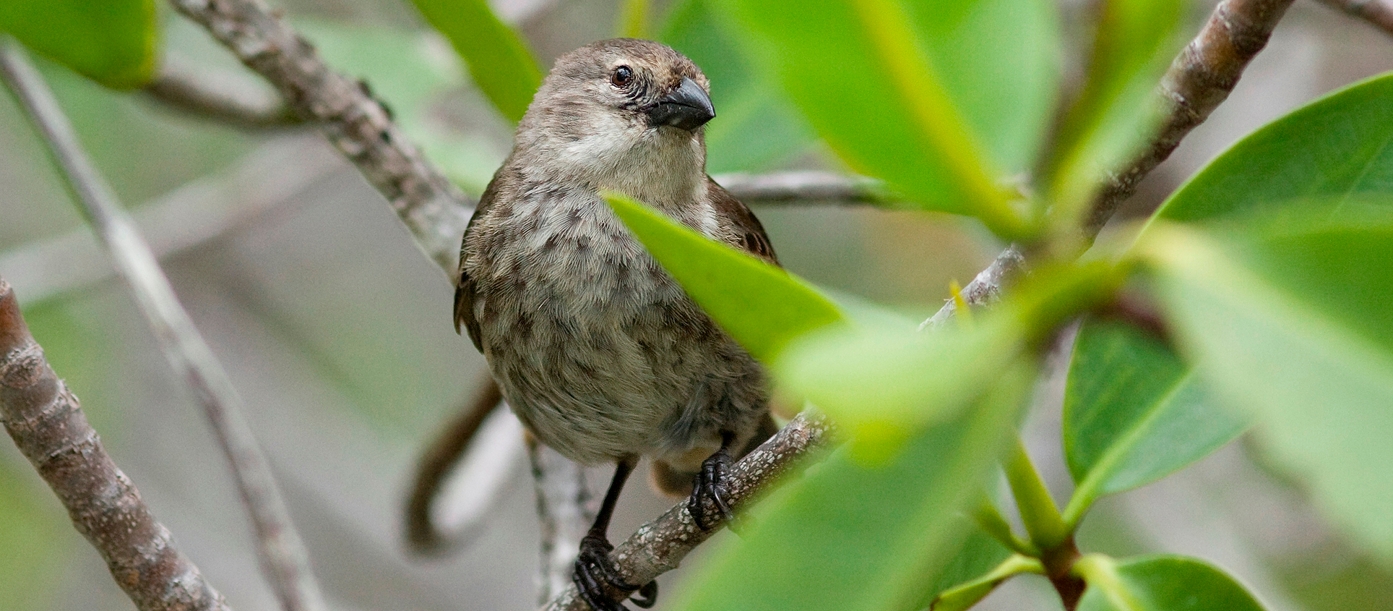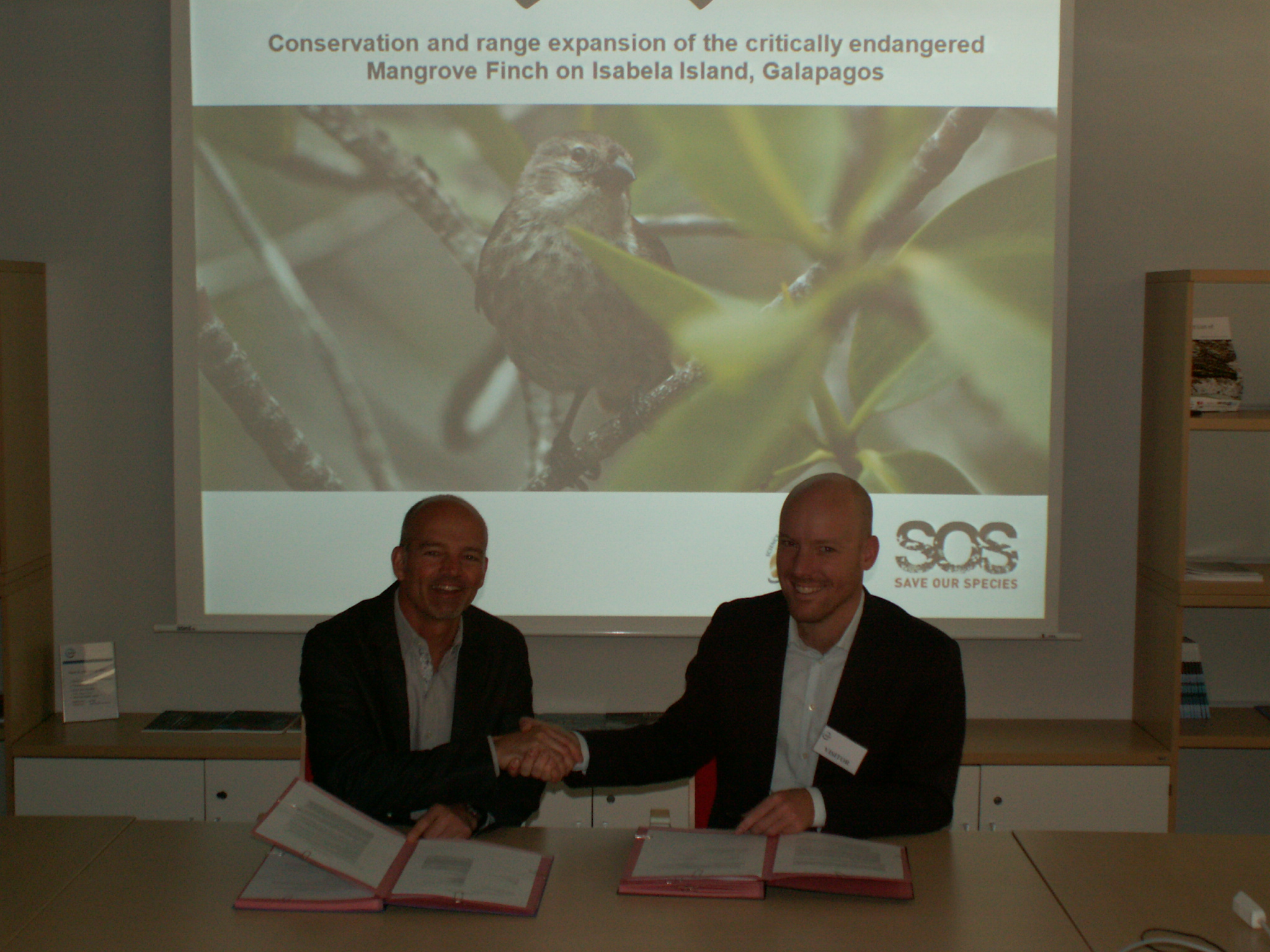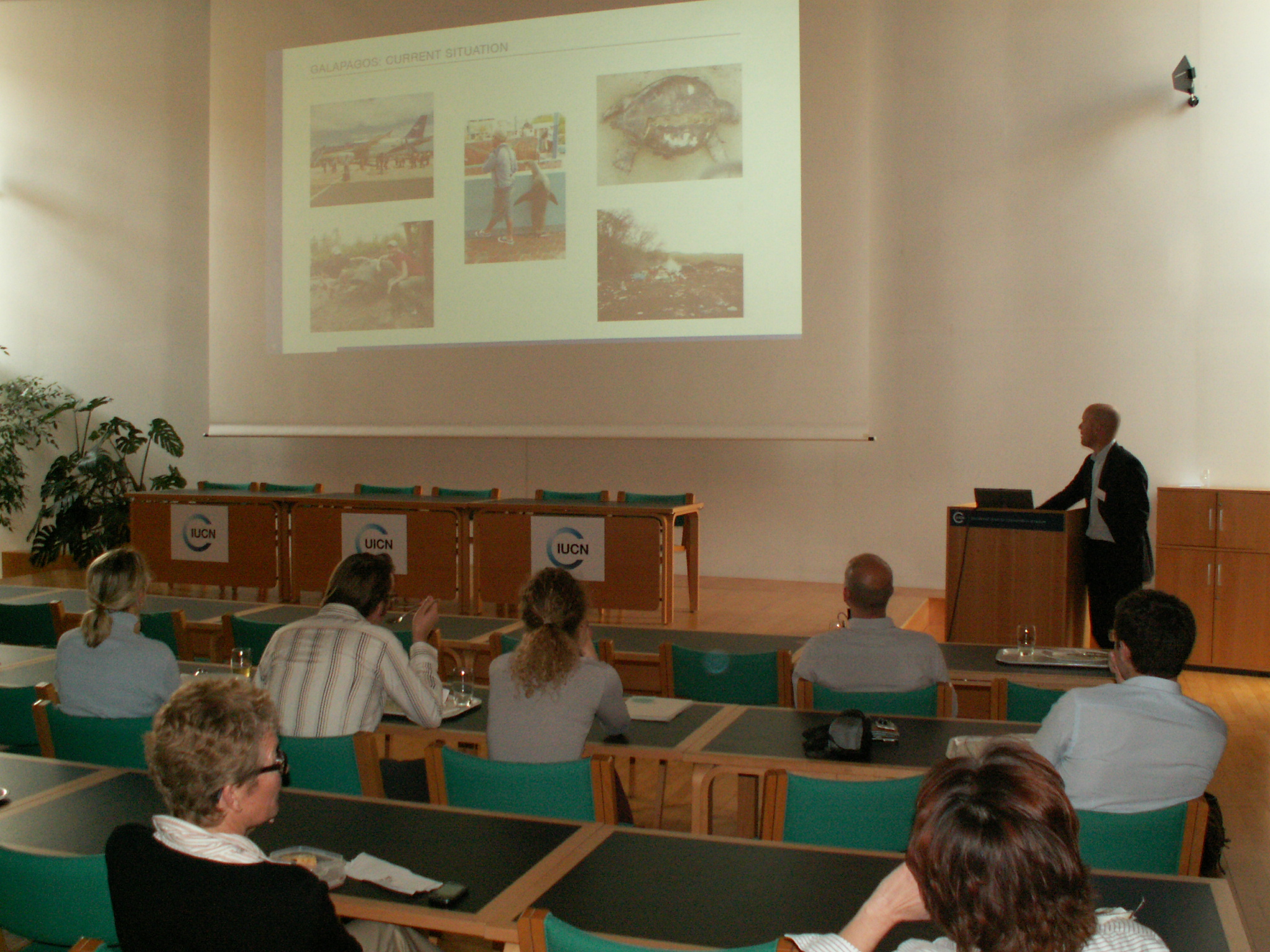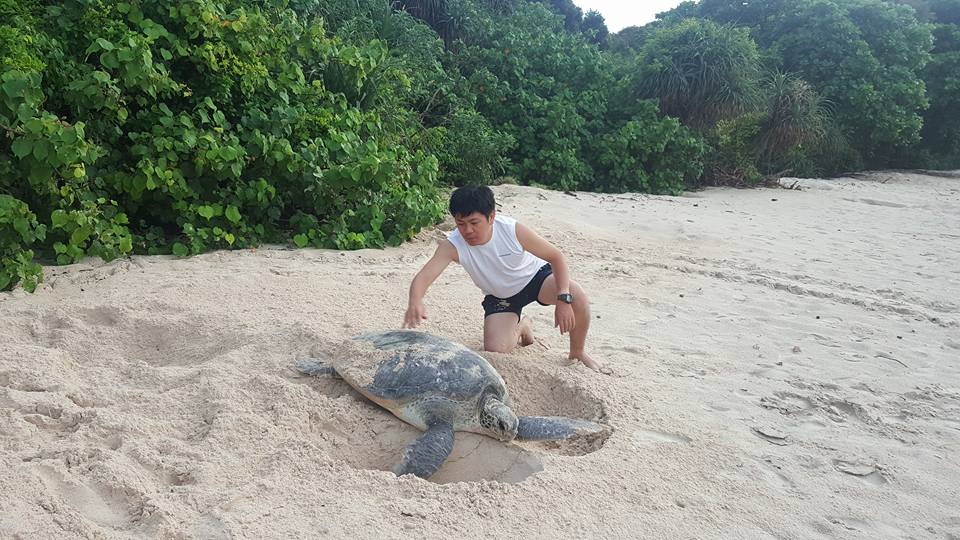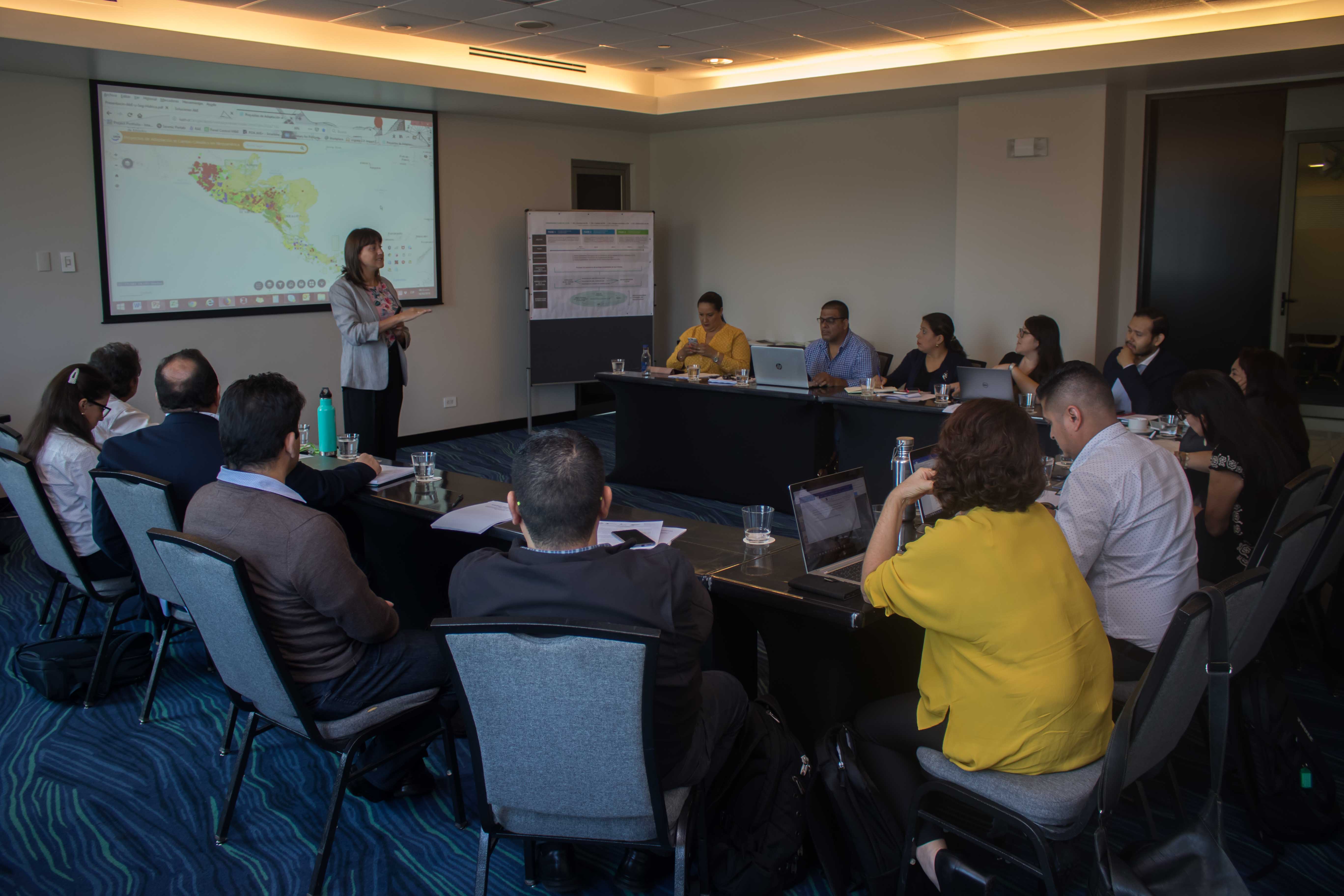Save Our Species funds Mangrove Finch project on Galapagos Islands
Swen Lorenz, Chief Executive of the Charles Darwin Foundation, an IUCN member organization, visited IUCN HQs in order to sign a grant agreement with SOS - Save Our Species to protect the Mangrove Finch (Camarhynchus heliobates) which is listed as Critically Endangered on the IUCN Red List of Threatened Species. The Mangrove Finch is the rarest of the 13 species of Darwin Finches with an estimated remaining population of 100 individuals found only in two locations on the Galapagos Islands.
The limited distribution of the Mangrove Finch makes it more susceptible to threats such as habitat destruction, predation and stochastic events such as volcanic uplift, storms and fires. More recent threats include the one posed by climate change as well as the spread in the Galapagos Islands of the bot fly (Philornis downsi) whose parasitic larvae are causing a widespread decline among all the birds of the archipelago.
The SOS-funded project will tackle threats to the species through the control of parasitic flies, the trial resettlement and extension of its natural range and with habitat protection for the mangrove forests which form its only habitat. The long term success of the project will be ensured through the transfer of conservation management of this species to the Galapagos National Park Service, the relevant authority in charge of conservation on the islands and a close partner of CDF.
Mr. Lorenz gave a very interesting speech at IUCN about current conservation challenges on the Galapagos Islands and the work done by the Charles Darwin Foundation. The international not-for-profit organization strives to find solutions that respect man and nature and thus contributes to conservation and sustainable development. The organization has initiated a successful Tortoise breeding program and set up the world`s most complete database of a single ecosystem. For fifty years, CDF has worked closely with the Galapagos National Park Service (GNPS), the main government authority safeguarding the islands’ natural resources, supplementing their management efforts with the results of scientific research to conserve this living laboratory.
In 1978 the Galapagos Islands were nominated as the first UNESCO World Natural Heritage Site. Charles Darwin`s theory of evolution originated from the Galapagos Islands, the world`s best preserved tropical archipelago with a high level of endemism.
As Mr. Lorenz` presentation illustrated, invasive species represent one of the highest threats to the biodiversity of the Galapagos Islands. For example the introduction of blackberry replaced vast tracts of the native Scalesia forest in some cases reducing it to less than 1% of its original extent. No bird extinction has occurred on the islands this far and CDF and its partners, both national and international, are well positioned to makes sure that no bird extinction takes place in the future. After all, as Swen Lorenz said at the end of his presentation, “If you cannot make conservation work in the Galapagos, where else can you do it?”
